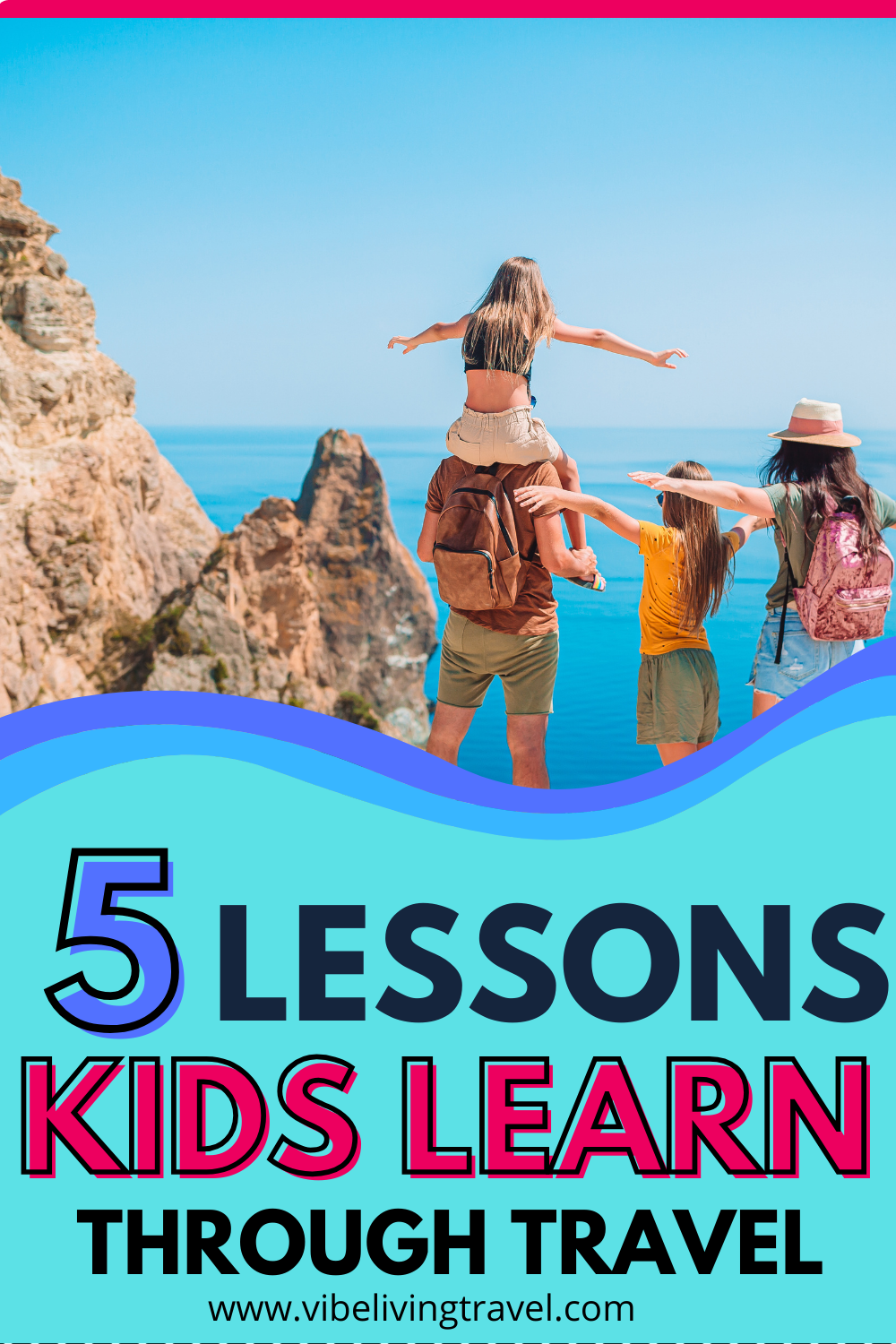Your cart is currently empty!

5 Lessons Kids Learn Naturally Through Travel
There’s something magical that happens when you trade routines for roadmaps and classrooms for culture. Slow travel isn’t just a different pace — it’s a different way of seeing, learning, and growing.
While traditional education often compartmentalizes subjects, slow travel weaves learning into everyday life. The world becomes the curriculum. And without even realizing it, kids absorb powerful, lifelong lessons.
Here are 5 things children learn naturally through slow, intentional travel — no worksheets required.

1. 🌎 Adaptability
One week you’re exploring ancient ruins in Mexico, the next you’re navigating a rainy day in a small town in France. Through slow travel, kids learn to expect the unexpected and adapt with flexibility and resilience.
They begin to understand:
- Plans can change — and that’s okay.
- Delays, detours, and discomfort are part of the adventure.
- New foods, new beds, new rhythms are nothing to fear.
This emotional agility is something no textbook can teach — but travel can.
2. 🧠 Curiosity Becomes a Superpower
When every place brings new language, landscapes, and lifestyles, kids start to ask better questions — not because they have to, but because they’re genuinely curious.
They wonder:
- Why do people here eat dinner so late?
- What does that sign say?
- How did this building get built so long ago?
Curiosity becomes a muscle they use daily. And instead of memorizing facts, they connect the dots between history, language, culture, and their own lived experience.
3. 💬 Cultural Respect and Emotional Intelligence
In slow travel, kids don’t just observe different cultures — they live in them. They greet new neighbors, navigate different social norms, and learn to be guests in someone else’s home country.
This fosters:
- Empathy — realizing not everyone lives the way they do
- Humility — making mistakes in a new language and trying again
- Respect — for traditions, rituals, and ways of being that are different from their own
These aren’t just travel skills — they’re human skills.

4. 💡 Learning Without a Bell Schedule
Slow travel erases the line between “school time” and “real life.” A hike becomes science class. A market becomes math. A museum becomes a history book they can walk through.
Children begin to:
- See learning as a lifestyle, not just a task
- Discover their interests and strengths outside of traditional assessments
- Experience education as empowering, not obligatory
This is where worldschooling shines — creating a flow where life and learning dance together.
5. 🧘♀️ Presence Over Productivity
Perhaps the most important lesson: slow travel teaches presence.
Kids learn to:
- Sit still and listen to the waves
- Linger at a meal without rushing
- Notice tiny details in their surroundings
They don’t need to be busy to be worthy. They don’t need constant stimulation to be engaged. Slow travel gives them permission to breathe — and from that space, their creativity, intuition, and confidence bloom.
Final Thoughts
Slow travel isn’t just about seeing the world — it’s about becoming more fully human.
For kids, it’s a chance to grow up rooted in wonder, resilience, and respect.
For us as parents, it’s a reminder that the most important lessons are often the ones learned outside of school walls — with muddy shoes, open hearts, and the world as our guide.
Interested in learning more about slow travel and world schooling… GRAB OUR FREE GUIDE
